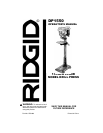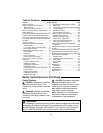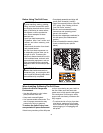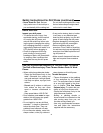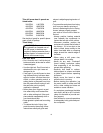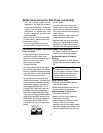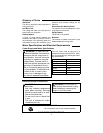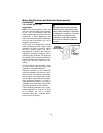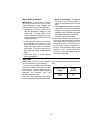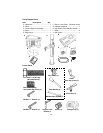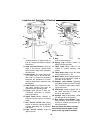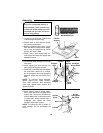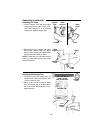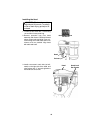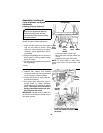
4
Safety Instructions For Drill Press (continued)
• Never Stand On Tool. Serious
injury could occur if the tool tips or
you accidentally hit the cutting tool.
Do not store anything above or near
the tool where anyone might stand
on the tool to reach them.
Before Each Use
Inspect your drill press.
• To reduce the risk of injury from
accidental starting, turn the switch
off, unplug the drill press, and
remove the switch key before rais-
ing the guard, changing the cutting
tool, changing the setup, or adjust-
ing anything. Make sure switch is in
OFF position before plugging in.
• Check for alignment of moving
parts, binding of moving parts,
breakage of parts, drill press stabil-
ity, and any other conditions that
may affect the way the drill press
works.
• If any part is missing, bent or broken
in any way, or any electrical part
does not work properly, turn the drill
press off and unplug the drill press.
• Replace damaged or missing parts
before using the drill press again.
• Remove adjusting keys and
wrenches. Form a habit of checking
for and removing keys and adjusting
wrenches from table top before turn-
ing drill press on.
• Make sure all clamps and locks are
tight and no parts have excessive
play.
Use Only Accessories Designed For This Drill Press To Reduce
The Risk of Serious Injury From Thrown Broken Parts Or Work
Pieces
• When cutting large diameter holes:
- Clamp the workpiece firmly to the
table. Otherwise the cutting tool
may grab and spin it at high speed.
- Use only one piece, cup-type, hole
cutters.
- Do not use fly cutters or multi-part
hole cutters as they can come
apart or become unbalanced in
use.
- Keep speed below 1500 R.P.M.
• Drum sanders must never be oper-
ated on this drill press at a speed
greater than 1800 R.P.M.
• Do not install or use any drill that
exceeds 7” in length or extends 6”
below the chuck jaws. They can
suddenly bend outward or break.
• Do not use wire wheels, router bits,
shaper cutters, circle (fly) cutters or
rotary planers on this drill press.
Thrown Workpiece
• Thrown Workpiece is the grabbing
of the workpiece by the rotating
tool. The workpiece can be thrown
at a very high speed in the direc-
tion of rotation. This Can Cause
Serious Injury. To reduce the pos-
sibility of injury from thrown work:
- Clamp the workpiece firmly to the
table whenever possible.
- Buffing or sanding wheels or
drums should be contacted on the
side moving away from you, not
the side moving toward you.
- Use only recommended accesso-
ries and follow the instructions
supplied with the accessory.



